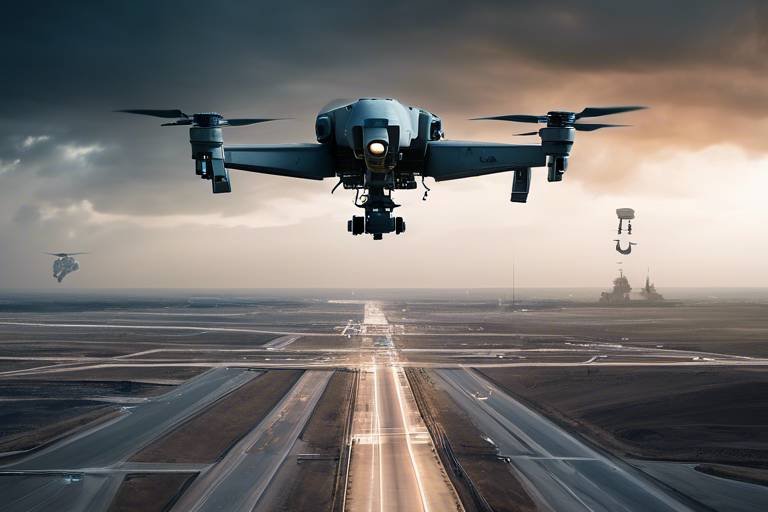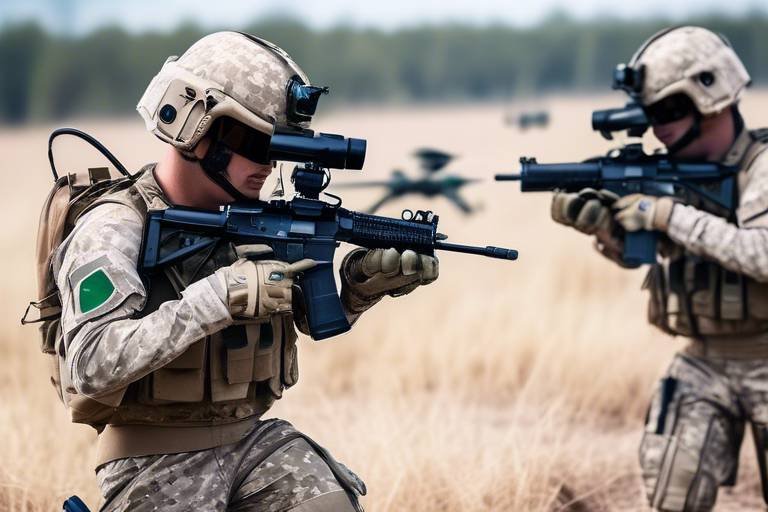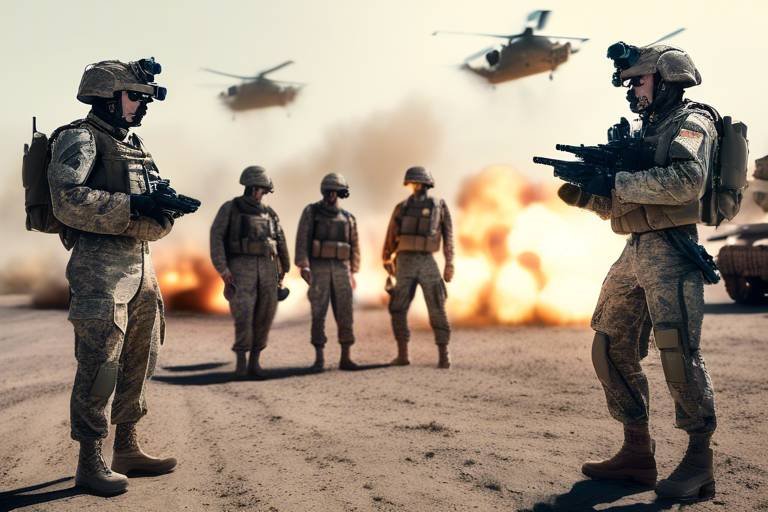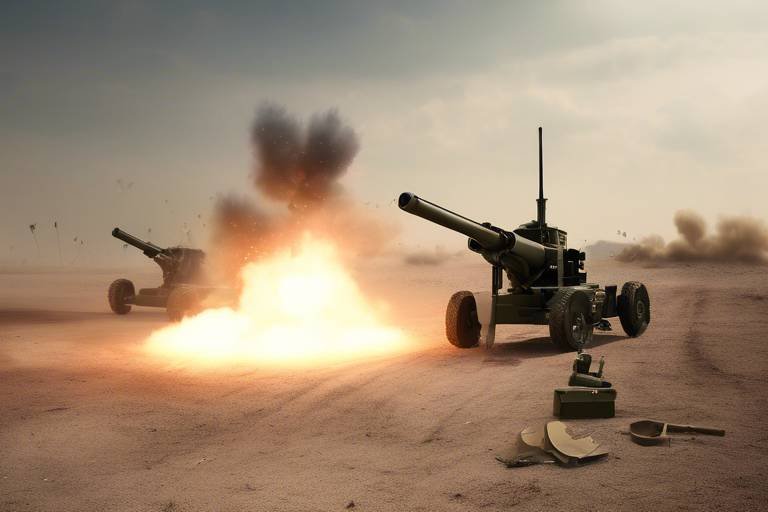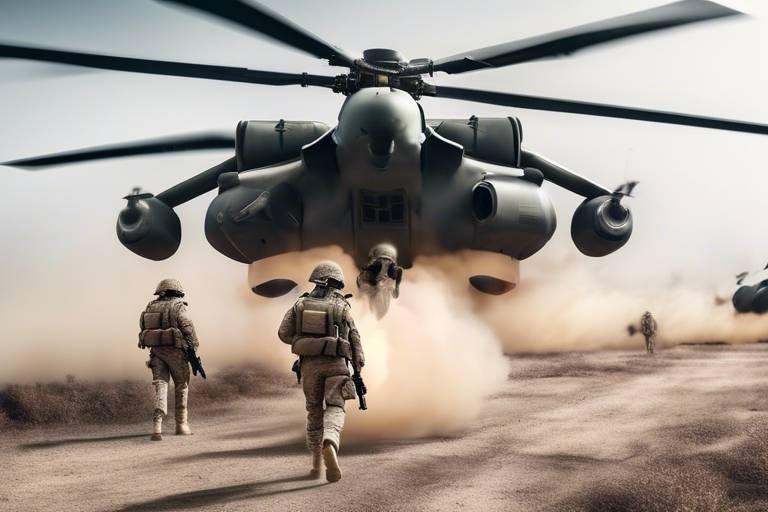How AI is Improving Military Operational Efficiency
In today's rapidly evolving world, artificial intelligence (AI) is not just a buzzword; it's a game-changer, particularly in the military sector. The integration of AI technologies is enhancing military operational efficiency in ways we never thought possible. From strategic planning to logistics, AI is transforming how military operations are conducted. Imagine having the ability to analyze vast amounts of data in real-time, allowing for quicker and more informed decisions. This isn't science fiction—it's happening right now. As we delve deeper into this topic, we'll uncover how AI is reshaping the landscape of military operations, making them more efficient, effective, and responsive to the challenges of modern warfare.
One of the most significant impacts of AI in the military is its ability to enhance decision-making. Traditional decision-making processes often rely on historical data and human intuition, which can be slow and prone to errors. However, with AI technologies, military leaders can access real-time data analysis, predictive insights, and improved situational awareness. This leads to more informed and timely choices. For instance, AI algorithms can sift through mountains of data, identifying patterns and trends that human analysts might miss. This capability not only speeds up the decision-making process but also improves the overall quality of those decisions, ultimately leading to better outcomes on the battlefield.
Another area where AI is making waves is in logistics. Military operations depend heavily on efficient supply chain management, and AI-driven solutions are revolutionizing this aspect. By optimizing resource allocation and inventory control, AI can significantly reduce costs and enhance operational readiness. For example, consider the implementation of automated supply chains. These systems ensure that troops receive the necessary supplies promptly, even in dynamic environments. When every second counts, the ability to automate and optimize logistics is invaluable.
With the integration of AI, military supply chains can operate with a level of efficiency that was previously unimaginable. AI systems can forecast demand, track shipments, and manage inventory levels in real-time. This means that supplies are not just delivered on time; they are delivered precisely when and where they are needed. In a sense, it's like having a personal assistant who anticipates your needs before you even ask—ensuring that resources are available without the burden of overstocking.
Moreover, AI systems can predict equipment failures before they occur, allowing for timely maintenance that minimizes downtime. Imagine a scenario where a critical piece of equipment fails during a mission. The consequences could be dire. However, with predictive maintenance powered by AI, military assets can be kept in optimal condition, enhancing their reliability and effectiveness.
AI also enhances inventory management by tracking supplies in real-time. This capability ensures that military units have the resources they need when they need them. Gone are the days of guesswork and overstocking; AI provides a clear picture of inventory levels, enabling more precise planning and execution.
In addition to logistics, AI algorithms analyze vast amounts of data to optimize resource allocation. This means that personnel and equipment can be deployed where they are most needed for maximum impact. It's like having a tactical genius at your disposal, ensuring that every resource is used efficiently and effectively.
AI technologies are also advancing military training programs through realistic simulations and personalized learning experiences. This allows service members to hone their skills in a safe and controlled environment. For instance, the integration of AI with virtual reality (VR) creates immersive training scenarios that enhance soldiers' preparedness for real-world challenges. This level of training not only improves tactical decision-making skills but also builds confidence in high-pressure situations.
Imagine being able to practice a mission in a virtual environment that mimics real-life conditions. AI-driven VR training allows for such experiences, enabling soldiers to engage in complex scenarios without the risks associated with live training exercises. This kind of preparation can be the difference between success and failure when it matters most.
Furthermore, AI-driven adaptive learning systems tailor training programs to individual service members' needs. This ensures that each soldier receives the most effective instruction for their specific skill set. It's akin to having a personal trainer who adjusts their methods based on your performance, ensuring that you improve at the fastest possible rate.
Lastly, AI plays a crucial role in strengthening military cybersecurity. In an age where cyber threats are ever-evolving, AI technologies are essential for detecting threats, analyzing vulnerabilities, and responding to attacks in real-time. This capability safeguards sensitive information and infrastructure, which is paramount for national security.
Advanced AI algorithms can identify potential cyber threats by analyzing patterns and anomalies. This allows military cybersecurity teams to respond proactively and mitigate risks before they escalate into serious issues. It's like having a sentinel that never sleeps, always on the lookout for potential dangers.
Additionally, AI systems facilitate automated incident response protocols. This means that when a cybersecurity breach occurs, the system can initiate a rapid response to contain and remediate the issue, minimizing damage and protecting critical military operations. In the fast-paced world of cyber warfare, speed is of the essence, and AI provides that edge.
- How is AI used in military decision-making? AI enhances decision-making by providing real-time data analysis and predictive insights, leading to more informed choices.
- What role does AI play in military logistics? AI streamlines logistics through automated supply chains, predictive maintenance, and real-time inventory management, improving operational efficiency.
- How does AI improve military training? AI technologies create realistic simulations and adaptive learning systems, allowing service members to train effectively and safely.
- What is the importance of AI in military cybersecurity? AI strengthens cybersecurity by detecting threats and automating incident response, safeguarding sensitive military information.

Enhancing Decision-Making
Artificial Intelligence (AI) is not just a buzzword; it's a game-changer in military operations, especially when it comes to decision-making. Imagine a battlefield where commanders have access to real-time data analysis and predictive insights at their fingertips. This is no longer a distant dream; it’s the reality brought forth by AI technologies. With the ability to process vast amounts of information almost instantaneously, AI enhances situational awareness, allowing military leaders to make informed and timely choices. Think of it as having a highly skilled assistant who can sift through mountains of data and present only the most relevant information, enabling quicker and more effective decisions.
One of the most significant advantages of AI in military decision-making is its capability to provide predictive analytics. For instance, AI systems can analyze patterns from historical data to forecast potential outcomes in various scenarios. This predictive power means that military strategists can anticipate enemy movements, resource needs, and even potential risks before they become pressing issues. The result? A proactive approach to military strategy that can save lives and resources.
Moreover, AI enhances collaborative decision-making among different military branches. By integrating AI systems across various platforms, information silos are broken down, allowing for a more unified operational picture. This interconnectedness ensures that all units—whether they are on land, sea, or air—are on the same page. For example, if a unit on the ground detects an unusual movement, AI can quickly analyze this data and share it with air and naval forces, enabling a coordinated response.
To illustrate how AI improves decision-making, consider the following table that highlights key AI applications and their impacts:
| AI Application | Impact on Decision-Making |
|---|---|
| Real-Time Data Analysis | Enhances situational awareness and quickens response times. |
| Predictive Analytics | Anticipates outcomes and risks, enabling proactive strategies. |
| Collaborative Platforms | Facilitates information sharing across military branches. |
| Automated Reporting | Reduces human error and speeds up information dissemination. |
In conclusion, the integration of AI into military decision-making is not merely an upgrade; it represents a fundamental shift in how strategies are formulated and executed. The ability to analyze data in real-time and derive actionable insights is akin to having a crystal ball that provides clarity in chaotic environments. As military operations become increasingly complex, the necessity for such advanced decision-making tools will only grow, ensuring that our armed forces remain agile, informed, and prepared for any challenge.
- How does AI improve military decision-making? AI enhances decision-making by providing real-time data analysis, predictive insights, and improved situational awareness.
- What are predictive analytics in military operations? Predictive analytics involves using historical data to forecast potential outcomes and risks, enabling proactive strategies.
- Can AI systems be integrated across different military branches? Yes, AI systems can facilitate collaboration and information sharing among various military branches for unified decision-making.
- What role does real-time data play in military operations? Real-time data allows military leaders to make informed decisions quickly, improving response times in dynamic environments.
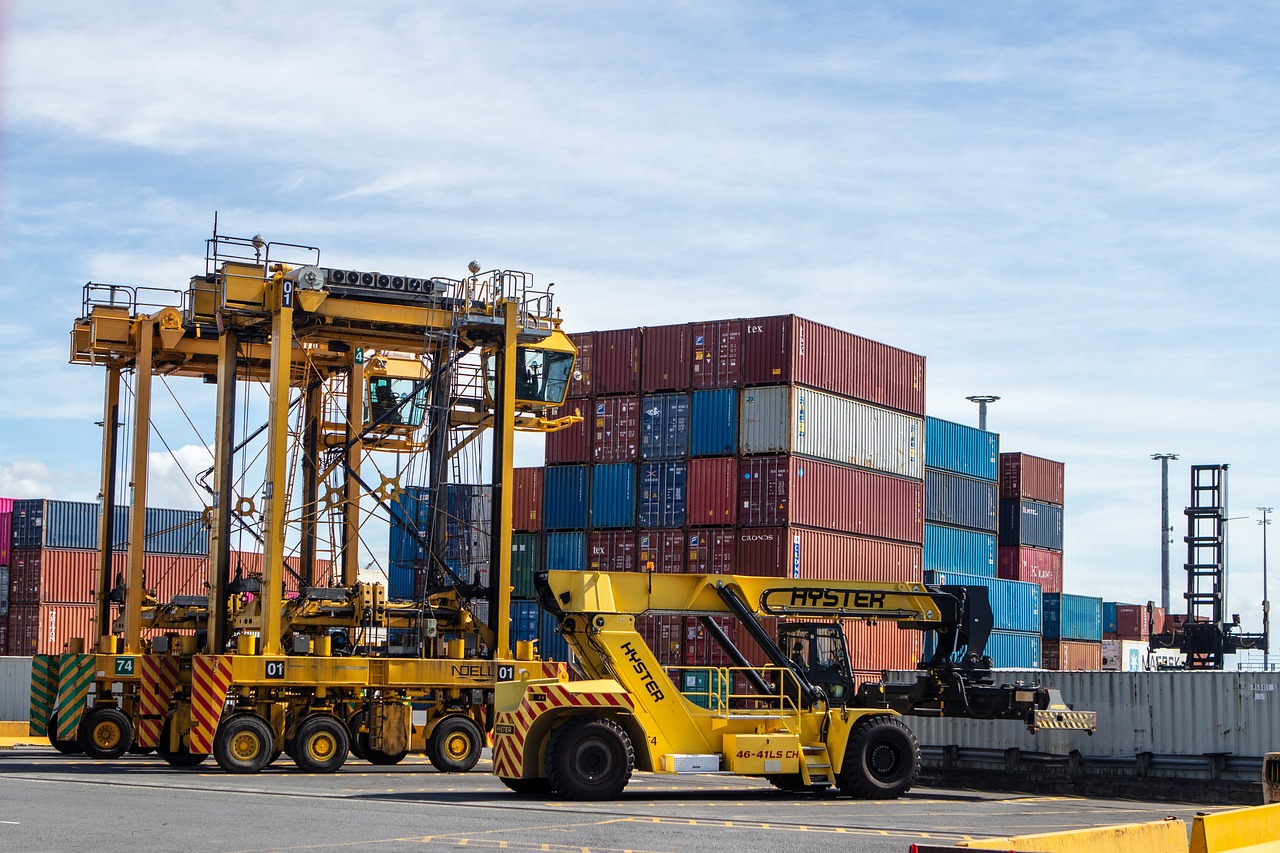
Streamlining Logistics
In the ever-evolving landscape of military operations, logistical efficiency is paramount. The integration of artificial intelligence (AI) is revolutionizing how the military approaches logistics, transforming traditional supply chain management into a highly optimized and responsive system. Imagine a world where resources are allocated seamlessly, and supplies are delivered with pinpoint accuracy. This is not just a dream; it’s becoming a reality thanks to AI-driven solutions.
One of the most significant advancements in this area is the development of automated supply chains. By leveraging AI technologies, military logistics can now achieve unprecedented levels of efficiency. For instance, AI algorithms can analyze real-time data regarding troop movements, weather conditions, and supply needs to ensure that soldiers receive essential supplies right when they need them. This capability is especially critical in dynamic environments where the situation can change in an instant. The result? Troops are better equipped, and operational readiness is significantly enhanced.
With AI, the concept of automated supply chains takes on a new meaning. These systems utilize advanced algorithms to optimize the flow of materials and resources, reducing the chances of delays and shortages. For example, imagine a scenario where a unit is deployed to a remote location. AI can predict the demand for supplies based on historical data and current conditions, enabling preemptive actions to ensure that everything from ammunition to medical supplies is on hand. This proactive approach minimizes the risk of operational disruption and enhances mission success rates.
Another critical aspect of streamlining logistics is predictive maintenance. AI systems are capable of monitoring equipment performance and predicting potential failures before they occur. This means that maintenance can be scheduled at optimal times, reducing downtime and ensuring that military assets remain fully operational. For example, if a vehicle shows signs of wear and tear, AI can alert maintenance crews to address the issue before it escalates into a more significant problem. This not only saves time and resources but also enhances the overall reliability of military operations.
Moreover, AI enhances inventory management through real-time tracking of supplies. Gone are the days of overstocking or running out of essential items at critical moments. With AI, military units can maintain an accurate and current overview of their inventory, ensuring that they have the necessary resources available when needed. This capability allows for a more agile response to changing operational demands, ultimately leading to improved effectiveness on the battlefield.
Furthermore, AI plays a pivotal role in data-driven resource allocation. By analyzing vast amounts of data from various sources, AI algorithms can identify where personnel and equipment are most needed. This ensures that resources are deployed for maximum impact, enhancing operational effectiveness. For instance, during a humanitarian mission, AI can analyze the needs of affected populations and allocate resources accordingly, ensuring that aid reaches those who need it most. This level of precision in resource management not only saves time and money but also enhances the military’s ability to respond to crises effectively.
- How does AI improve military logistics?
AI enhances military logistics by automating supply chains, predicting maintenance needs, and managing inventory in real-time, leading to improved efficiency and effectiveness. - What is predictive maintenance in military operations?
Predictive maintenance uses AI to monitor equipment health and predict failures before they occur, allowing for timely repairs and reducing downtime. - Can AI help in disaster response?
Absolutely! AI can analyze data to optimize resource allocation during disaster response, ensuring that aid is delivered where it is most needed.
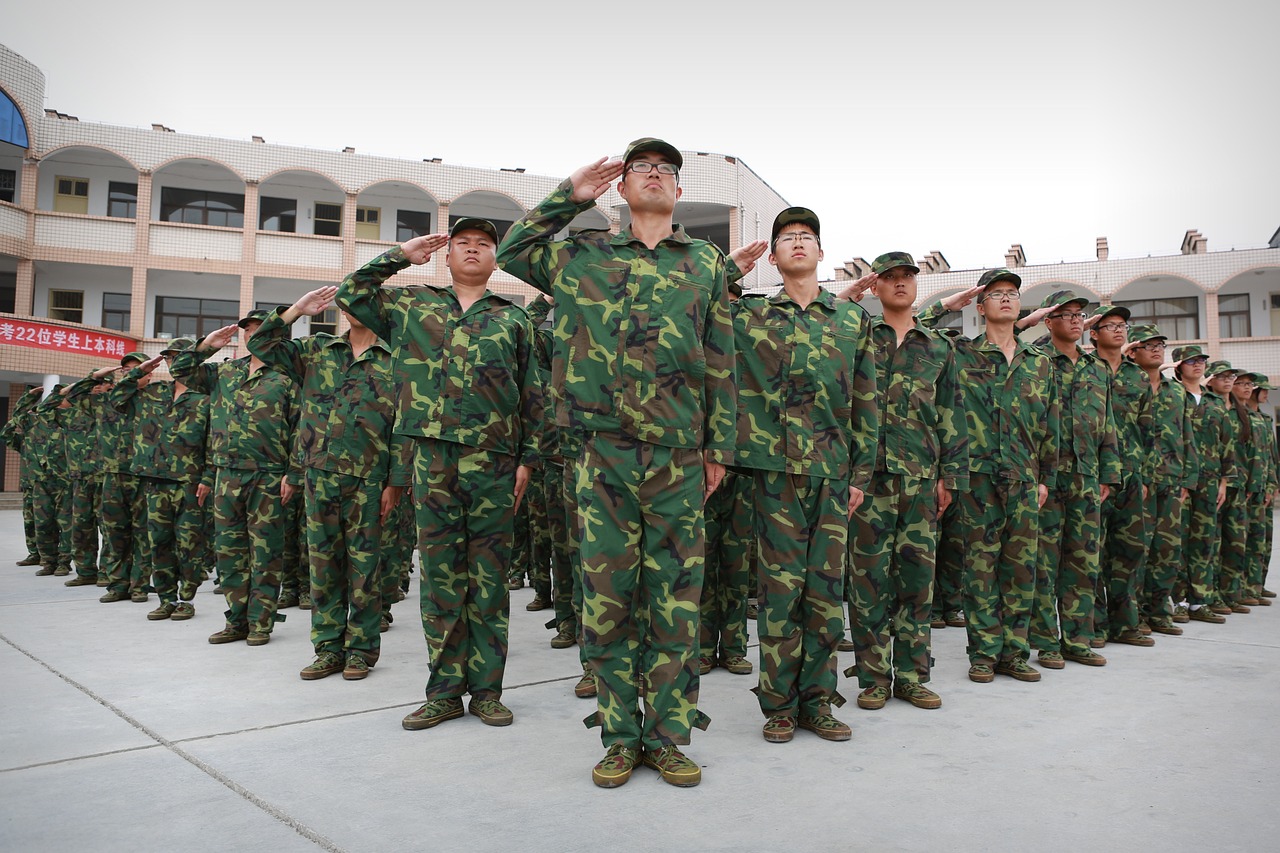
Automated Supply Chains
In the fast-paced world of military operations, the need for efficiency and timeliness is paramount. Automated supply chains, powered by artificial intelligence, are transforming how military forces manage their logistics. Imagine a system that can predict what supplies will be needed, when they will be needed, and where they should be delivered—all without the need for constant human oversight. This is not just a futuristic dream; it is becoming a reality thanks to AI.
One of the most significant advantages of automated supply chains is their ability to adapt to dynamically changing environments. In traditional logistics, delays can occur due to unforeseen circumstances, such as weather changes or sudden mission alterations. However, AI algorithms can analyze a multitude of variables in real-time, allowing for rapid adjustments in supply routes and inventory levels. This means that troops in the field receive the supplies they need, precisely when they need them, which can be the difference between success and failure in critical operations.
Furthermore, the automation of supply chains reduces the chances of human error, which has historically plagued military logistics. With AI, the chances of miscalculating supply needs or misrouting shipments are significantly diminished. For instance, consider the following key components of automated supply chains:
- Real-Time Tracking: AI systems continuously monitor the movement of supplies, providing updates that ensure transparency and accountability.
- Demand Forecasting: By analyzing past usage patterns and current mission requirements, AI can predict future supply needs with remarkable accuracy.
- Optimized Routing: AI algorithms can determine the most efficient routes for supply deliveries, taking into account factors like traffic, terrain, and potential threats.
Moreover, automated supply chains enable better inventory management. With AI, military units can maintain optimal stock levels, avoiding both shortages and overstock situations that can strain resources. For instance, advanced AI systems can analyze consumption rates and adjust orders accordingly, ensuring that supplies are replenished just in time.
In summary, the integration of AI into automated supply chains is not just a minor enhancement; it represents a seismic shift in military logistics. By leveraging this technology, military forces can achieve unprecedented levels of efficiency, ensuring that they are always prepared for whatever challenges may arise. The future of military logistics is not just about getting supplies from point A to point B; it's about doing so in the most intelligent and effective way possible.
Q: How does AI improve supply chain efficiency in the military?
A: AI enhances supply chain efficiency by providing real-time data analysis, optimizing routing, and predicting demand based on historical data and current mission requirements.
Q: What are the risks associated with automated supply chains?
A: While automated supply chains reduce human error, they also rely heavily on technology, which can be vulnerable to cyber threats. Ensuring robust cybersecurity measures is essential.
Q: Can AI adapt to unexpected changes in supply needs?
A: Yes, AI systems are designed to analyze a variety of factors in real-time, allowing for quick adjustments to supply routes and inventory levels based on changing circumstances.

Predictive Maintenance
In the fast-paced world of military operations, has emerged as a game-changer, revolutionizing how the armed forces manage their equipment. Imagine a scenario where military assets are not just repaired when they break down, but are instead maintained proactively, ensuring that they are always ready for action. This is the essence of predictive maintenance, and it leverages the power of artificial intelligence to foresee potential equipment failures before they disrupt operations.
At the heart of predictive maintenance is the ability to analyze vast amounts of data generated by military machinery. AI algorithms sift through this data, identifying patterns and anomalies that could indicate an impending failure. For instance, sensors embedded in vehicles and equipment continuously monitor performance metrics such as temperature, vibration, and operational hours. When these metrics deviate from established norms, the AI system alerts maintenance crews, allowing them to address issues before they escalate. This proactive approach minimizes downtime, enhances operational readiness, and ultimately saves the military both time and resources.
To illustrate the impact of predictive maintenance, consider the following table that outlines the benefits compared to traditional maintenance practices:
| Aspect | Traditional Maintenance | Predictive Maintenance |
|---|---|---|
| Downtime | Unplanned and often lengthy | Minimized through proactive interventions |
| Cost | Higher due to emergency repairs | Lower due to scheduled maintenance |
| Operational Readiness | Variable, depending on equipment status | Consistently high due to timely maintenance |
| Data Utilization | Limited to historical data | Real-time analytics for informed decisions |
Moreover, the integration of predictive maintenance not only enhances the reliability of military assets but also contributes to a culture of efficiency within the armed forces. Maintenance personnel can prioritize tasks based on the urgency of the alerts generated by AI systems, ensuring that critical equipment is serviced first. This shift from a reactive to a proactive maintenance strategy reflects a broader trend in military operations: the increasing reliance on technology to optimize performance and resource management.
In conclusion, represents a significant advancement in military logistics and operational efficiency. By harnessing the power of AI, the military can ensure that its equipment is always in peak condition, ready to respond to any challenge. As technology continues to evolve, the potential for further enhancements in predictive maintenance will undoubtedly lead to even greater efficiencies and capabilities on the battlefield.
- What is predictive maintenance?
Predictive maintenance is a proactive approach that uses AI and data analytics to predict equipment failures before they occur, allowing for timely maintenance and reduced downtime. - How does AI contribute to predictive maintenance?
AI analyzes real-time data from equipment sensors to identify patterns and anomalies, enabling maintenance teams to act before issues escalate. - What are the benefits of predictive maintenance in the military?
Benefits include minimized downtime, reduced costs, improved operational readiness, and enhanced data utilization for informed decision-making. - Can predictive maintenance be applied to all military equipment?
While it can be applied to most equipment, the effectiveness of predictive maintenance depends on the availability of data and the specific technology used.

Real-Time Inventory Management
In the fast-paced world of military operations, having the right supplies at the right time can mean the difference between success and failure. powered by artificial intelligence (AI) is revolutionizing how the military handles its resources. Imagine a system that not only tracks supplies but also predicts shortages before they become a problem. That’s the kind of efficiency AI brings to the table.
AI-driven inventory management systems utilize advanced algorithms to monitor stock levels continuously. This means that military units can access up-to-the-minute data on their supplies, ensuring they are never caught off guard. For instance, if a particular item is running low, the system can automatically trigger a reorder, allowing for seamless restocking without manual intervention. This system is particularly crucial in dynamic environments where conditions change rapidly and unpredictably.
One of the standout features of real-time inventory management is its ability to integrate with various data sources. By analyzing data from multiple points—such as supply chains, weather conditions, and troop movements—AI can provide a comprehensive overview of resource availability and needs. This integration allows military leaders to make informed decisions quickly, optimizing their operational readiness.
Moreover, real-time inventory systems enhance visibility across the supply chain. Military personnel can track inventory levels at different locations, ensuring that supplies are distributed efficiently. For example, if a unit in one area is overstocked while another is running low, the system can facilitate transfers to balance the inventory. This not only saves money but also ensures that every soldier has access to the necessary gear and equipment.
To illustrate the impact of real-time inventory management, consider the following table:
| Feature | Benefit |
|---|---|
| Continuous Monitoring | Ensures supplies are always available when needed |
| Automated Reordering | Reduces manual workload and potential for human error |
| Data Integration | Provides a holistic view of resource allocation and needs |
| Enhanced Visibility | Improves distribution efficiency across different units |
In conclusion, the implementation of AI in real-time inventory management is a game-changer for military operations. By ensuring that troops have the resources they need, when they need them, AI not only enhances operational efficiency but also boosts overall mission success rates. With the ability to adapt to changing situations and predict future needs, military leaders can focus on what truly matters: executing their missions effectively.
- What is real-time inventory management?
Real-time inventory management refers to the continuous tracking and management of stock levels, allowing organizations to have up-to-the-minute information on their supplies. - How does AI improve inventory management?
AI enhances inventory management by automating tracking, predicting shortages, and integrating data from various sources for better decision-making. - Why is inventory management crucial for military operations?
Effective inventory management ensures that military units have the necessary supplies and equipment available at all times, which is vital for mission success. - Can real-time inventory management reduce costs?
Yes, by optimizing resource allocation and minimizing waste, real-time inventory management can significantly reduce operational costs.

Data-Driven Resource Allocation
The military landscape is evolving rapidly, and at the forefront of this transformation is the concept of . Imagine a chess game where every move is calculated based on real-time data analysis; that’s exactly how AI is revolutionizing the way military resources are allocated. By leveraging vast amounts of data, AI algorithms can pinpoint where personnel and equipment are most needed, ensuring that every resource is utilized to its fullest potential. This approach not only maximizes operational efficiency but also enhances mission success rates.
One of the key advantages of data-driven resource allocation is its ability to analyze historical data alongside real-time intelligence. For instance, AI systems can examine past engagements and current battlefield conditions to forecast where troops might be deployed most effectively. This predictive capability allows military leaders to make decisions that are not just reactive but also strategically proactive, ensuring that resources are positioned for maximum impact.
To illustrate, consider the following table that summarizes how AI impacts resource allocation:
| Aspect | Traditional Methods | AI-Driven Approaches |
|---|---|---|
| Data Analysis | Manual and time-consuming | Automated and real-time |
| Decision-Making | Based on intuition | Data-driven insights |
| Resource Utilization | Often inefficient | Optimized for effectiveness |
| Response Time | Delayed due to analysis | Immediate adjustments possible |
Moreover, AI's ability to continuously learn from new data means that military operations can adapt in real-time. As situations on the ground change, AI systems can reallocate resources swiftly, ensuring that troops are always equipped to handle emerging challenges. This dynamic approach is akin to a river flowing around obstacles, finding the most efficient path forward.
In addition, data-driven resource allocation also enhances collaboration among different military branches. By sharing data across platforms, AI enables a unified view of resource availability and needs, fostering a more cohesive operational strategy. This interconnectedness is vital in modern warfare, where every second counts, and decisions must be made swiftly and accurately.
In conclusion, the integration of AI in data-driven resource allocation is a game changer for military operations. It empowers leaders to make informed decisions, optimizes resource use, and ultimately enhances the effectiveness of military missions. As technology continues to advance, the military's reliance on these intelligent systems will only grow, paving the way for a more agile and responsive defense strategy.
- What is data-driven resource allocation?
Data-driven resource allocation refers to the process of using data analysis and AI algorithms to determine the most effective distribution of military resources based on real-time conditions and historical data. - How does AI improve decision-making in the military?
AI improves decision-making by providing real-time data analysis, predictive insights, and enhanced situational awareness, enabling military leaders to make informed choices quickly. - Can AI adapt to changing battlefield conditions?
Yes, AI systems are designed to learn from new data continuously, allowing them to adapt resource allocation swiftly in response to changing conditions on the battlefield. - What are the benefits of using AI in military logistics?
AI enhances logistics by optimizing supply chains, improving inventory management, and ensuring timely delivery of resources, which ultimately leads to cost savings and improved operational readiness.
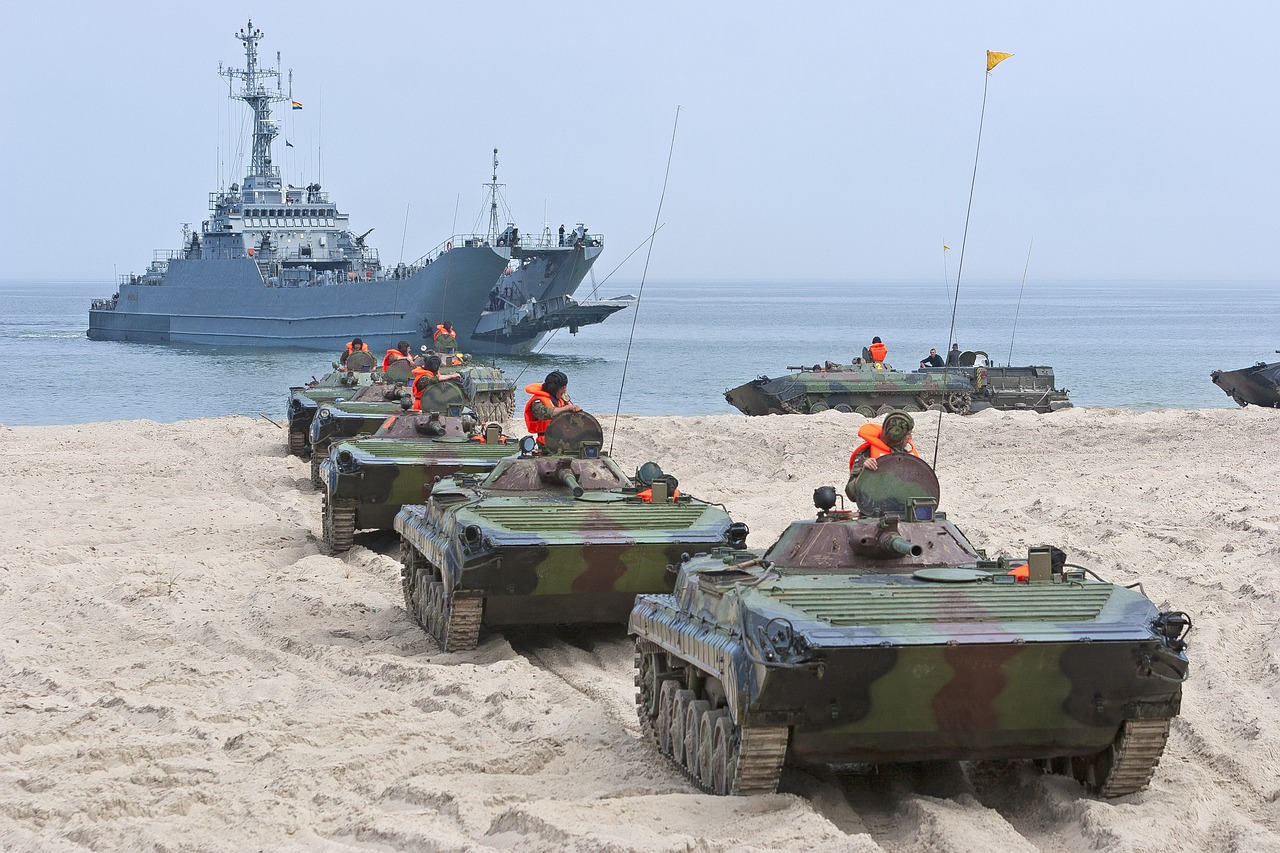
Improving Training and Simulation
In today's fast-paced military landscape, the need for effective training and simulation has never been more critical. Artificial Intelligence (AI) is stepping in to revolutionize how military personnel are trained, offering innovative solutions that enhance both realism and effectiveness. Imagine being able to train in a virtual environment that mimics real-world scenarios down to the finest detail. This is not science fiction; it's happening right now, thanks to AI. By integrating advanced technologies, military training programs are becoming more immersive, allowing service members to prepare for the unpredictable nature of modern warfare.
One of the most exciting advancements is the use of Virtual Reality (VR) in training. Soldiers can engage in realistic combat scenarios without ever leaving the training facility. Picture this: you're in a virtual battlefield, surrounded by your squad, responding to threats from all angles. This level of immersion not only boosts confidence but also sharpens tactical decision-making skills under pressure. The ability to practice in a safe environment means that mistakes can be made without real-world consequences, allowing for a more profound learning experience.
Moreover, AI-driven adaptive learning systems are transforming the way training programs are tailored to individual needs. No two soldiers are alike, and AI recognizes this by customizing training experiences to match each service member's unique skill set and learning pace. For instance, if a soldier struggles with a particular tactic, the system can adjust the training modules to provide additional practice and feedback. This personalized approach ensures that every individual receives the most effective instruction, ultimately leading to a more proficient and capable military force.
Additionally, the data collected during these training sessions can be analyzed to identify trends and areas for improvement. Instructors can receive real-time feedback on how trainees are performing, allowing them to adapt their teaching methods accordingly. This continuous loop of feedback and improvement is akin to having a coach in your ear during a game, guiding you to make better decisions and refine your skills.
The benefits of AI in military training extend beyond individual soldiers. Entire units can engage in joint training exercises that simulate multi-domain operations, preparing them for the complexities of modern warfare. These simulations can involve air, land, and sea components, ensuring that all branches of the military are on the same page and ready to collaborate seamlessly in real-world scenarios. By practicing together in a controlled environment, units can build trust and improve communication, which are essential elements in any successful operation.
As the military continues to embrace AI technologies, the future of training and simulation looks brighter than ever. The integration of these advanced systems not only enhances the readiness of our armed forces but also ensures that they are equipped with the skills necessary to tackle the challenges of tomorrow. In a world where every second counts, the ability to train smarter, not harder, is a game-changer.
- How does AI improve military training? AI enhances military training by providing realistic simulations, personalized learning experiences, and real-time feedback to improve soldier performance.
- What role does virtual reality play in military training? Virtual reality creates immersive training environments that allow soldiers to practice in scenarios that closely mimic real-world situations.
- Can AI adapt training programs for individual soldiers? Yes, AI-driven adaptive learning systems tailor training to the specific needs and skill levels of each service member.
- What are the benefits of joint training exercises? Joint training exercises improve collaboration and communication among different military branches, ensuring they can work together effectively in actual operations.
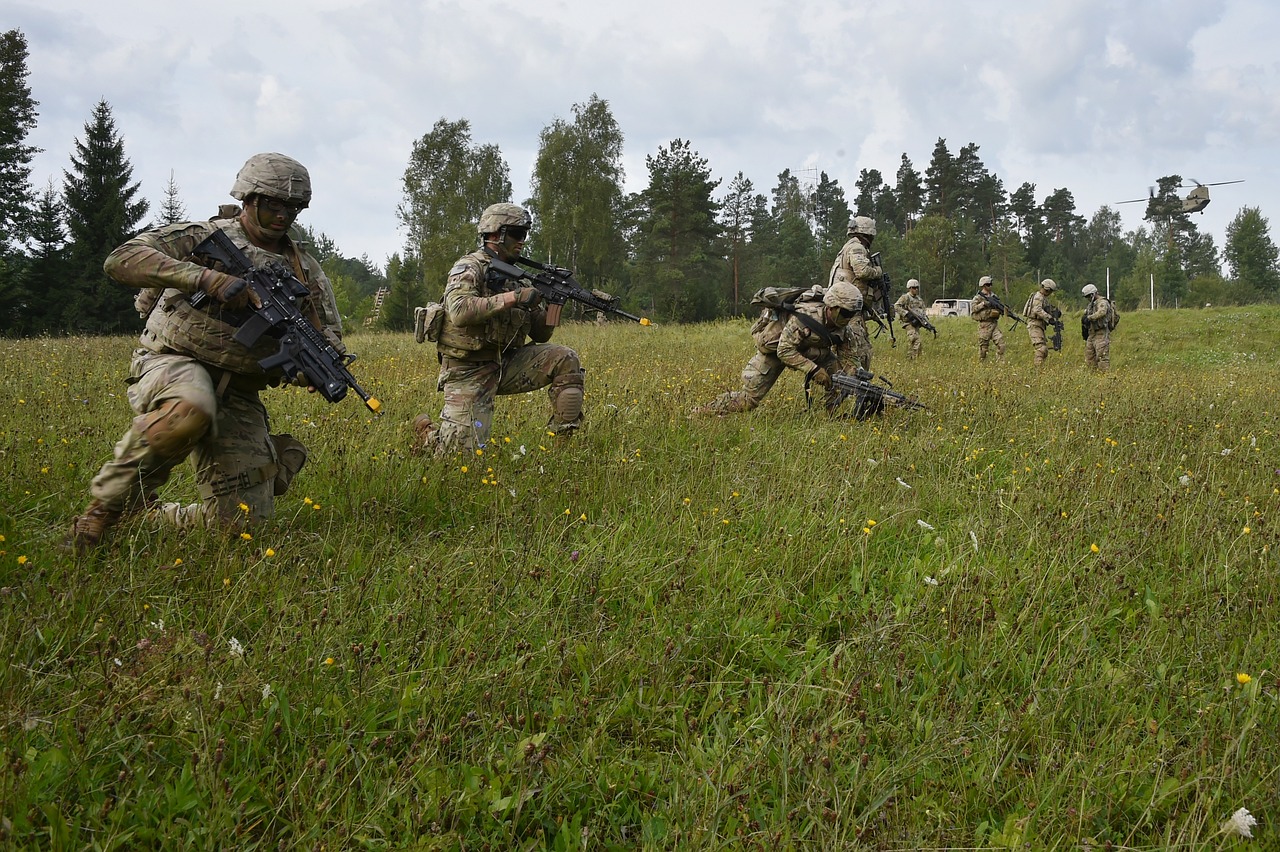
Virtual Reality Training
Imagine stepping into a world where training for military operations feels as real as the battlefield itself. Virtual Reality (VR) training is doing just that—transforming how soldiers prepare for the challenges they may face in the field. By immersing service members in highly realistic simulations, VR training enhances their operational readiness, allowing them to experience various scenarios without the inherent risks of real-life exercises.
The beauty of VR training lies in its ability to replicate complex environments and situations. Soldiers can engage in everything from urban warfare to natural disaster response, all while honing their tactical decision-making skills. This immersive experience is not just about the thrill; it’s about learning through experience. When soldiers face simulated threats, they can practice their responses, evaluate their strategies, and learn from their mistakes in a controlled environment. This method of training is akin to a pilot using a flight simulator before taking to the skies—it's all about preparation.
Moreover, VR training programs can be tailored to meet the specific needs of individual soldiers or units. For instance, if a unit is preparing for a specific mission, instructors can create scenarios that mirror the anticipated challenges. This customization ensures that the training is relevant and impactful. With AI technology integrated into VR, the training can adapt in real-time based on the soldier's performance, providing instant feedback and adjusting the difficulty level as needed.
Consider the following benefits of VR training:
- Enhanced Engagement: The immersive nature of VR keeps soldiers engaged, making training more enjoyable and effective.
- Safe Environment: Soldiers can practice high-risk maneuvers without the danger of physical harm.
- Immediate Feedback: AI-driven systems provide real-time assessments, allowing for quick adjustments to training methods.
- Cost Efficiency: Reduces the need for extensive physical resources and logistics associated with traditional training exercises.
In summary, is revolutionizing military preparedness by offering a dynamic, engaging, and safe platform for soldiers to develop and refine their skills. As technology continues to evolve, we can only anticipate even more innovative training solutions that will further enhance operational efficiency and effectiveness.
Q: How does Virtual Reality Training differ from traditional training methods?
A: Unlike traditional methods that often rely on physical drills and classroom instruction, VR training immerses soldiers in simulated environments, allowing them to practice skills in realistic scenarios without the associated risks.
Q: Can VR training be customized for specific missions?
A: Yes! VR training can be tailored to replicate scenarios that soldiers are likely to encounter during specific missions, making the training more relevant and effective.
Q: What role does AI play in enhancing VR training?
A: AI enhances VR training by providing real-time feedback, adjusting scenarios based on performance, and analyzing data to improve training outcomes.
Q: Is VR training cost-effective?
A: Yes, VR training can be more cost-effective compared to traditional training methods, as it reduces the need for physical resources and the logistics involved in organizing large-scale training exercises.

Adaptive Learning Systems
In the ever-evolving landscape of military training, are emerging as a game-changer. These systems leverage the power of artificial intelligence to create personalized training experiences that cater to the unique needs of each service member. Imagine walking into a training facility where the program immediately adjusts to your skill level, learning pace, and even your preferred learning style. Sounds futuristic, right? Well, it’s happening now, and it’s transforming how soldiers prepare for the battlefield.
The beauty of adaptive learning systems lies in their ability to analyze performance data in real-time. For instance, as a soldier engages in a simulation, the system continuously monitors their actions, decisions, and outcomes. If a soldier struggles with a specific tactic, the system identifies this gap and adjusts the training content accordingly. This means that instead of a one-size-fits-all approach, each soldier receives tailored instruction designed to enhance their strengths and address their weaknesses.
Moreover, these systems can incorporate various learning modalities, such as visual aids, hands-on practice, and theoretical knowledge, ensuring that every soldier can grasp complex concepts effectively. For example, if a soldier excels in visual learning, the system might provide more video-based content or interactive simulations, while those who prefer textual information might receive detailed manuals and reading materials. This flexibility not only boosts engagement but also significantly improves retention rates.
To illustrate the effectiveness of adaptive learning systems in military training, consider the following table that highlights key benefits:
| Benefit | Description |
|---|---|
| Personalization | Training programs are customized to fit individual learning styles and requirements. |
| Real-Time Feedback | Immediate insights allow soldiers to adjust their strategies and improve performance on the spot. |
| Increased Engagement | Interactive and tailored content keeps soldiers motivated and focused during training. |
| Enhanced Skill Development | Fosters a deeper understanding of tactics and strategies by addressing specific learning gaps. |
As we consider the future of military training, it's clear that adaptive learning systems will play a vital role in preparing soldiers for the complexities of modern warfare. By embracing these innovations, military organizations can ensure that their personnel are not just trained, but are highly skilled and adaptable warriors ready to tackle any challenge. The integration of AI into training is not just a trend; it’s a necessary evolution that aligns with the demands of contemporary combat scenarios.
- What are adaptive learning systems?
Adaptive learning systems are educational technologies that tailor learning experiences to individual users based on their performance and learning preferences. - How do adaptive learning systems benefit military training?
They provide personalized training, real-time feedback, and increased engagement, ultimately enhancing skill development and readiness. - Can adaptive learning systems be integrated with existing training programs?
Yes, adaptive learning systems can complement and enhance traditional training methods by providing customized content and assessments. - What role does AI play in adaptive learning?
AI algorithms analyze data to adjust training materials and methods in real-time, ensuring that each soldier receives the most effective instruction.

Enhancing Cybersecurity
In today's digital battlefield, artificial intelligence (AI) is not just a helpful tool; it has become a vital ally in the fight against cyber threats. As military operations become increasingly reliant on technology, the need for robust cybersecurity measures has never been more critical. AI enhances cybersecurity by enabling rapid threat detection, analyzing vulnerabilities, and facilitating real-time responses to attacks. Imagine having a vigilant guardian that never sleeps, constantly monitoring for any signs of trouble—that's what AI brings to the table.
One of the most impressive capabilities of AI lies in its threat detection algorithms. These advanced systems analyze vast amounts of data to identify potential cyber threats by recognizing patterns and anomalies that a human might overlook. For example, if an unusual spike in data traffic occurs or a specific user account behaves suspiciously, AI can flag these activities for immediate investigation. This proactive approach allows military cybersecurity teams to respond swiftly, mitigating risks before they escalate into serious breaches.
Moreover, the integration of AI in cybersecurity is not limited to just detecting threats; it also plays a crucial role in automated incident response. In the event of a cyber breach, AI systems can execute predetermined protocols to contain and remediate the situation. This automation drastically reduces the time it takes to address security incidents, allowing military operations to continue with minimal disruption. Think of it as having a fire alarm that not only alerts you to smoke but also automatically dials the fire department—this level of efficiency is paramount in a military context.
To illustrate the impact of AI on military cybersecurity, consider the following table that outlines key benefits:
| Benefit | Description |
|---|---|
| Real-Time Threat Analysis | AI continuously monitors networks for suspicious activity, providing instant alerts. |
| Proactive Vulnerability Management | AI identifies potential weaknesses in systems before they can be exploited. |
| Faster Incident Response | Automated protocols enable rapid containment of breaches, minimizing damage. |
As military operations become more sophisticated, so too do the tactics employed by adversaries. This ongoing evolution means that military cybersecurity must be equally agile and responsive. By harnessing the power of AI, military forces can stay one step ahead of potential threats, ensuring the integrity of their operations and the safety of their personnel.
In conclusion, the role of AI in enhancing military cybersecurity cannot be overstated. From advanced threat detection algorithms to automated incident responses, AI serves as a formidable shield against the ever-evolving landscape of cyber threats. As we move forward, the integration of AI into military cybersecurity strategies will not only improve operational effectiveness but also protect sensitive information and infrastructure. It's a game-changer, and one that every military organization must embrace to ensure its security in the digital age.
- How does AI improve threat detection?
AI improves threat detection by analyzing massive datasets for unusual patterns and anomalies, allowing for quicker identification of potential threats. - What is automated incident response?
Automated incident response refers to AI systems executing predefined protocols to contain and remediate security breaches without human intervention. - Can AI predict future cyber threats?
While AI can analyze trends and patterns to provide insights, predicting future threats requires continuous data analysis and adaptation to emerging tactics.

Threat Detection Algorithms
In today's digital battlefield, are the unsung heroes in the realm of military cybersecurity. These advanced algorithms leverage the power of artificial intelligence to sift through vast oceans of data, identifying potential cyber threats before they can wreak havoc. Imagine trying to find a needle in a haystack; now, picture a supercharged magnet that can pinpoint that needle in seconds. That's the essence of what these algorithms do—they analyze patterns, detect anomalies, and flag suspicious activities with remarkable speed and accuracy.
The core of these algorithms lies in their ability to learn and adapt. They are not static; instead, they evolve with each new piece of data they encounter. This adaptability is crucial because cyber threats are constantly changing, becoming more sophisticated and elusive. For instance, a threat detection algorithm might analyze network traffic to establish a baseline of normal behavior. Once it understands what "normal" looks like, it can quickly identify deviations—like a sudden spike in traffic from an unknown source, which could indicate a potential breach.
Moreover, these algorithms can be categorized into different types based on their approach to threat detection:
- Signature-Based Detection: This method relies on predefined signatures of known threats. While effective against familiar attacks, it struggles with new or evolving threats.
- Anomaly-Based Detection: This approach focuses on identifying deviations from the norm, making it more effective against unknown threats. However, it may also lead to false positives if not calibrated correctly.
- Behavioral Detection: By analyzing user and entity behavior, these algorithms can detect unusual activities that may signify a security breach.
One of the most impressive aspects of threat detection algorithms is their ability to operate in real-time. This means that as soon as a potential threat is detected, the system can initiate an immediate response. It’s akin to having a security guard who doesn’t just spot a burglar but also alerts the police while simultaneously locking down the premises. This rapid response capability is vital in military operations where every second counts and the stakes are incredibly high.
Furthermore, the integration of machine learning enhances these algorithms’ effectiveness. As they process more data, they become better at distinguishing between benign and malicious activities. This continuous learning loop not only improves detection rates but also reduces the workload on cybersecurity personnel, allowing them to focus on more strategic tasks. In essence, it transforms the cybersecurity landscape from a reactive to a proactive stance, where threats are anticipated rather than merely responded to.
In summary, threat detection algorithms are a game-changer in military cybersecurity. By utilizing advanced AI techniques, they offer unparalleled speed and accuracy in identifying potential threats. As cyber warfare evolves, so too will these algorithms, ensuring that military operations remain secure and resilient against ever-changing digital threats.
Q1: How do threat detection algorithms work?
A1: Threat detection algorithms work by analyzing data patterns and identifying anomalies that may indicate a cyber threat. They use various techniques, including machine learning and statistical analysis, to enhance their detection capabilities.
Q2: What types of threats can these algorithms detect?
A2: These algorithms can detect a wide range of threats, including malware, phishing attacks, insider threats, and network intrusions, by recognizing both known signatures and unusual behavior.
Q3: How do military organizations implement these algorithms?
A3: Military organizations implement these algorithms through advanced cybersecurity systems that integrate with their existing infrastructure, allowing for real-time monitoring and response to potential threats.
Q4: Are there any limitations to threat detection algorithms?
A4: Yes, while these algorithms are highly effective, they can produce false positives and may struggle with new, unknown threats. Continuous tuning and updates are necessary to maintain their effectiveness.

Automated Incident Response
In the fast-paced world of military operations, time is of the essence, especially when it comes to cybersecurity. The integration of systems into military frameworks is revolutionizing how armed forces protect their digital assets. Imagine a scenario where a cyber attack is detected, and the response is initiated not by a human, but by an intelligent system that can act in mere seconds. This is the power of automation in cybersecurity!
Automated incident response systems are designed to swiftly identify, analyze, and respond to security incidents without the need for direct human intervention. This capability is crucial for military organizations that handle sensitive information and require a robust defense against potential threats. By leveraging advanced algorithms and machine learning, these systems can process vast amounts of data to detect anomalies and respond to threats in real-time.
One of the key components of automated incident response is the threat detection algorithms. These algorithms continuously monitor network traffic and user behavior, looking for patterns that may indicate a security breach. When a potential threat is identified, the system can take immediate action, such as isolating affected systems, blocking malicious traffic, or alerting cybersecurity personnel. This rapid response minimizes the window of opportunity for attackers, significantly reducing the potential damage.
Another critical aspect is the automated containment and remediation processes. Upon detecting a breach, the system can automatically initiate predefined protocols to contain the threat. For instance, it can quarantine infected machines or shut down compromised accounts, preventing further spread of the attack. Once the incident is contained, the system can also begin remediation efforts, such as restoring systems from secure backups or applying patches to vulnerabilities.
To illustrate the efficiency of these automated systems, consider the following table that outlines the typical steps involved in an automated incident response:
| Step | Description |
|---|---|
| Detection | Automated systems continuously monitor for signs of a breach. |
| Analysis | Threat detection algorithms analyze the data to confirm the threat. |
| Containment | The system isolates affected systems to prevent further damage. |
| Remediation | Automated protocols restore systems and eliminate vulnerabilities. |
| Reporting | Detailed reports are generated for review and future prevention. |
Moreover, the benefits of automated incident response extend beyond just speed. These systems also enhance the overall effectiveness of military cybersecurity by ensuring that human resources are allocated to more complex tasks that require critical thinking and strategic planning. With machines handling the routine and immediate responses, cybersecurity teams can focus on developing long-term strategies to bolster defenses against evolving threats.
In conclusion, the integration of automated incident response systems into military operations represents a significant leap forward in cybersecurity. By enabling rapid detection and response to threats, these systems not only protect sensitive information but also ensure that military forces can operate effectively in an increasingly digital battlefield.
- What is automated incident response?
Automated incident response refers to the use of intelligent systems to detect, analyze, and respond to cybersecurity incidents without human intervention. - How does it improve military cybersecurity?
It enhances military cybersecurity by enabling faster response times, reducing the potential damage from attacks, and allowing human resources to focus on more complex tasks. - What are threat detection algorithms?
These are advanced algorithms that continuously monitor network activity to identify patterns that may indicate a security breach. - Can automated systems completely replace human cybersecurity teams?
No, while they significantly enhance efficiency and response times, human expertise is still crucial for strategic oversight and complex decision-making.
Frequently Asked Questions
- How does AI enhance decision-making in military operations?
AI enhances decision-making by providing real-time data analysis and predictive insights. This means that military leaders can make more informed choices quickly, adapting to changing situations on the battlefield. Imagine having a personal assistant that can analyze thousands of reports in seconds and highlight the most critical information—that's what AI does for military strategists!
- What role does AI play in streamlining logistics?
AI plays a crucial role in logistics by optimizing supply chain management and resource allocation. It helps ensure that troops receive the right supplies at the right time, reducing waste and costs. Think of it like having a smart GPS for military resources, guiding everything to where it's needed most efficiently.
- What is automated supply chain management?
Automated supply chain management involves using AI to streamline the process of getting supplies to military units. This means that orders can be placed and fulfilled automatically, ensuring that soldiers are never without the essentials they need. It’s like having a well-oiled machine that keeps everything running smoothly, even in chaotic environments.
- How does AI contribute to predictive maintenance?
AI contributes to predictive maintenance by analyzing data to foresee equipment failures before they happen. This proactive approach minimizes downtime, allowing military assets to remain operational when they are needed most. Imagine being able to fix a problem before it even arises—AI makes that possible!
- Can AI improve military training programs?
Absolutely! AI enhances military training through realistic simulations and personalized learning experiences. By using AI-driven adaptive learning systems, training can be tailored to meet the unique needs of each service member, ensuring they develop the skills necessary for their specific roles.
- What are virtual reality training simulations?
Virtual reality training simulations are immersive environments created using AI and VR technology. They allow soldiers to practice their skills in a safe, controlled setting that mimics real-world scenarios. This type of training boosts preparedness and helps soldiers make better tactical decisions under pressure.
- How does AI enhance military cybersecurity?
AI enhances military cybersecurity by detecting threats and analyzing vulnerabilities in real-time. It provides military teams with the tools to respond to cyberattacks quickly, safeguarding sensitive information and critical infrastructure. Think of AI as a digital watchdog, tirelessly monitoring for any signs of trouble.
- What are threat detection algorithms?
Threat detection algorithms are advanced AI systems that identify potential cyber threats by analyzing patterns and anomalies in data. These algorithms enable military cybersecurity teams to act proactively, preventing breaches before they can cause harm. It's like having a security system that alerts you to intruders before they even reach the door!
- How does automated incident response work?
Automated incident response involves AI systems that can quickly contain and remediate cybersecurity breaches. By automating these protocols, military operations can minimize damage and ensure that critical systems remain secure. It's akin to having an emergency response team that springs into action the moment a threat is detected.









